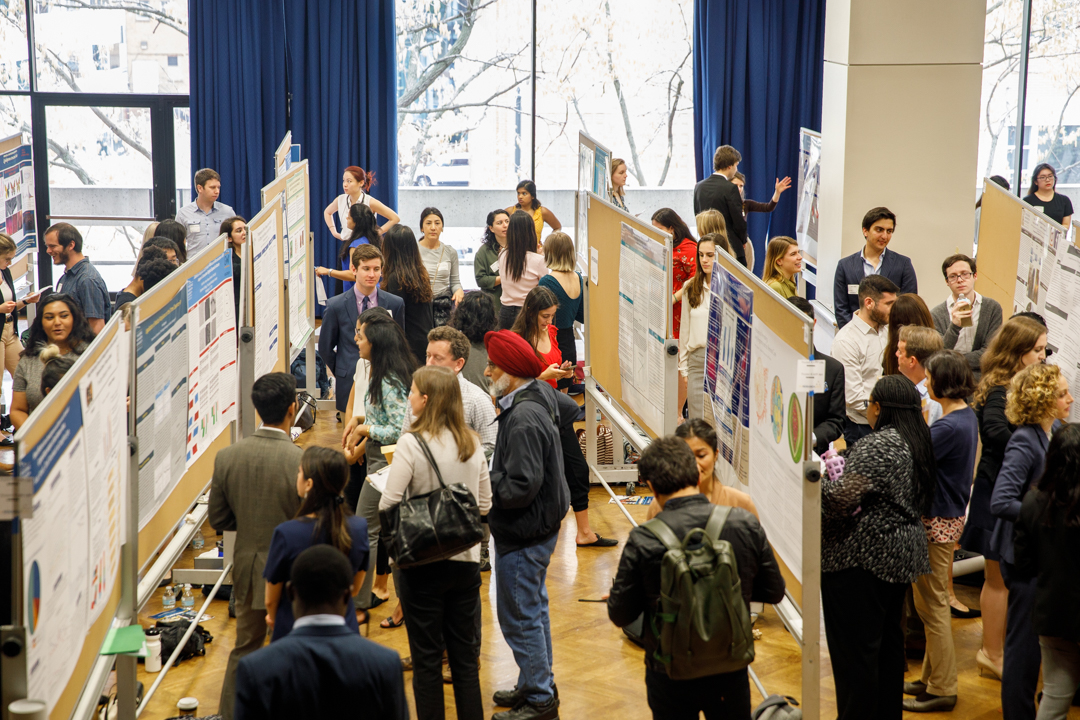George Washington University’s researchers are developing novel technology and thinking outside the box to tackle some of today’s biggest challenges like fighting cancer, keeping data private and purifying water. Later this month, six researchers will showcase their work in an interactive booth exhibit at this year’s eMerge Americas conference in Miami Beach.
It will be GW’s first participation in the annual conference since the university launched its partnership with eMerge Americas, the premier technology event that links Latin America to the rest of the world.
Cancer-fighting cold plasma tools
Michael Keidar, the James Clark Professor of Engineering at the School of Engineering and Applied Science, is a pioneer in the field of plasma medicine. He developed a cold plasma technology that targets and kills cancer cells during surgery without hurting healthy tissue— a finding that could revolutionize cancer treatment.
In 2017, GW signed a $5.3 million corporate research sponsorship agreement with Maryland-based US Patent Innovations, LLC to develop biomedical applications for plasma technology. The funding from USPI has enabled Dr. Keidar to expand his research.
Data Privacy App
Tian Lan and Guru Venkataramani, both associate professors in the Department of Electrical and Computer Engineering, have worked with their team to develop a learning-based malware protection tool that can notify users about data leakage on Android mobile devices. This information empowers users to act immediately to protect their privacy and security, with just a few simple clicks.
In 2017, Drs. Lan and Venkataramani were awarded a $1.4 million grant, funded by the Office of Naval Research, to study how customized software packages could individualize security in cyber systems. Their goal was to reduce security risks and foster a more resilient system.
Virtual reality infant intubation
James Hahn, a professor in the Department of Computer Science, worked with an interdisciplinary team to develop a virtual reality training program that better simulates a real-world medical emergency to improve pediatric medical resident training for intubating newborns.
Physicians have less than 30 seconds to intervene when a newborn baby is having trouble breathing. Medical residents typically train how to do a neonatal endotracheal intubation on an infant mannequin to simulate a human baby, but success rates in a medical setting are low. Using virtual reality, students can perform the procedure and watch their movements tracked on a computer screen in real time using a novel visualization algorithm developed by the team.
Water purification via nanotechnology
Danmeng Shuai, an assistant professor in the Department of Civil and Environmental Engineering, is using nanotechnology to address the global problem of water sustainability. His research team has created a novel, affordable material called graphitic carbon nitride that can purify water using solar energy. By using energy from sunlight, this material kills harmful germs, including bacteria and viruses. This water treatment process can also help destroy some chemicals that may contaminate ground water, including agrochemicals and pharmaceuticals.
Graphitic carbon nitride could also be used as a surface coating in hospitals. His lab is studying how graphitic carbon nitride can be used to automatically kill pathogens growing on door knobs and tables under indoor lighting. This reaction between the oxygen and indoor light would mean staff could spend less time sanitizing surfaces with disinfecting chemicals.
Wearable health sensors
Zhenyu Li, an associate professor of biomedical engineering, leads a team of GW engineers who have incorporated advanced electrocardiogram (ECG) capabilities into a wearable, personalized cardiac monitoring ring. The ring, through constant contact with the skin, could be a daily replacement for a traditional ECG, which is expensive and requires a hospital visit. This device could be life saving for the thousands of Americans who die from heart attacks that occur outside of a hospital setting every year.
Dr. Li’s team is also working to help people make more responsible choices when it comes to alcohol consumption by designing and fabricating a discreet, wearable, lab-on-a-patch that offers real-time monitoring of alcohol in sweat. In addition to measuring the blood-alcohol content in real time, the patch can transmit wirelessly to a smartphone, as well as a mobile cloud system for health analytics.
Predicting visual search performance
Stephen Mitroff and his colleagues are using cognitive science to improve airport security. Dr. Mitroff, a professor of cognitive neuroscience in the Columbian College of Arts and Sciences Department of Psychology, has worked to develop a screening and assessment tool that tests how well prospective and current aviation security officers perform visual searches.
The GW Visual Cognition Lab explores the nature of visual cognition—examining mechanisms of visual memory, perception, and attention. The team works with a variety of expert groups, including airport security officers and radiologists, to understand the effects of expertise and experience on visual cognition. They also study how individual differences in certain traits, personalities, and activities affect visual and attentional abilities.
GW’s presence at eMerge Americas represents its growing strengths in science, technology and engineering in ways that advance human health and create novel solutions for global challenges.




